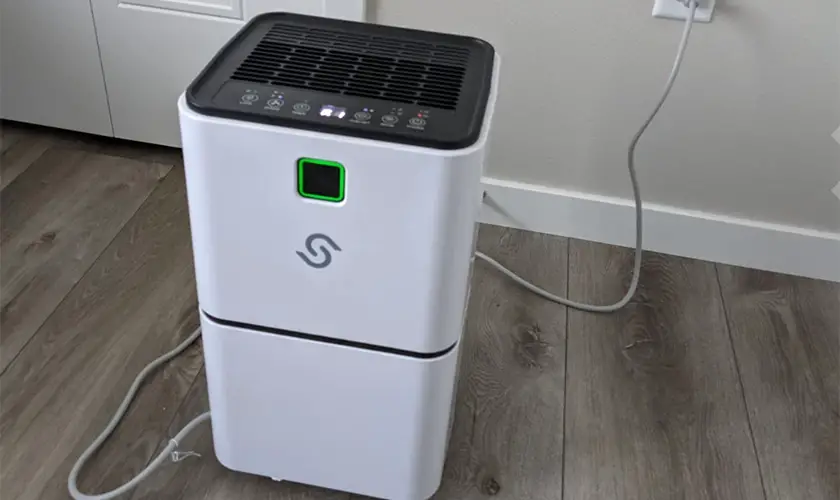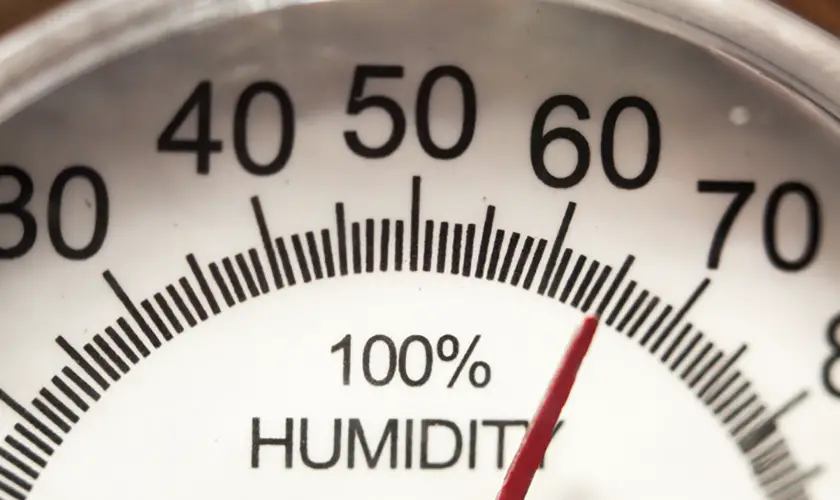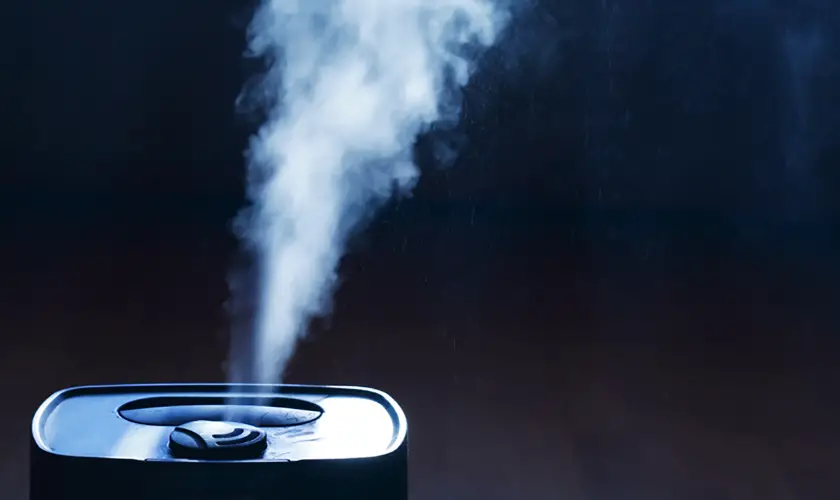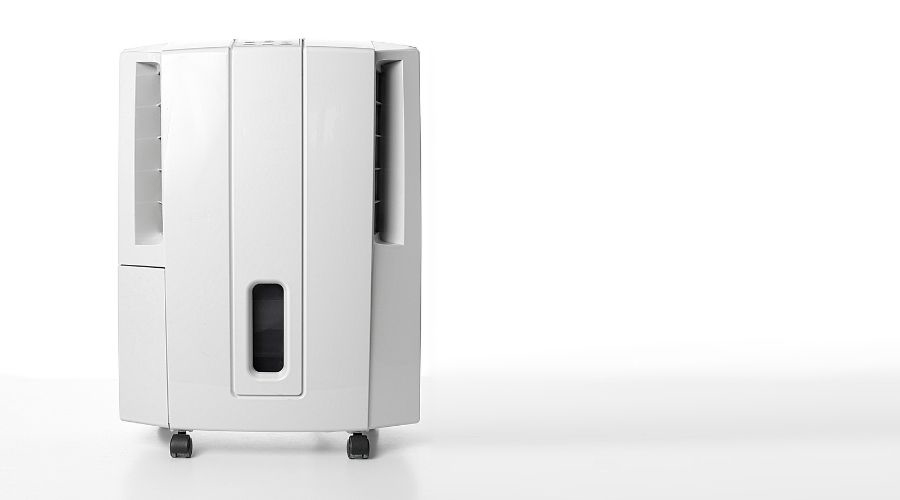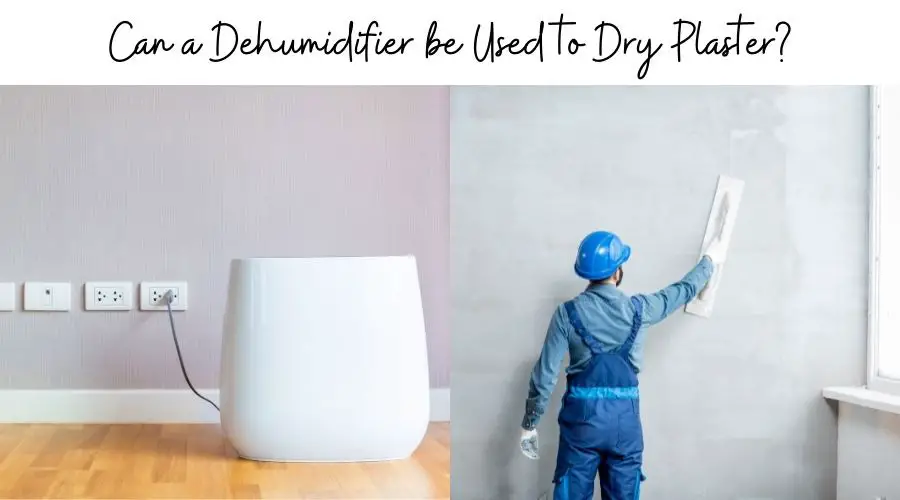
Dehumidifiers are extremely handy when living in humid areas of the country. It can mean the difference between living in a comfortable home and suffering in the wet heat of summer. Dehumidifiers are handy for many things, but drying plaster is not one of them.
It would be best if you didn’t use a dehumidifier to dry plaster because it will cause it to dry too quickly. If plaster dries too quickly, it will crack and split immediately or several years later.
Although plaster will inevitably crack over time due to weather changes and your house shifting, it doesn’t have to break because of a dehumidifier.
While you shouldn’t use a dehumidifier aggressively in the drying process, there is a time and a place for one. In this article, we’ll look at the correct ways to use a dehumidifier and how to dry plaster correctly.
What is the Best Way to Dry Out New Plaster?
1. Use a Heater
The best way to dry plaster is to let it dry naturally or by using heaters in the drying process. Heaters work better than dehumidifiers because they don’t take as much moisture out of the air.
2. Use a Dehumidifier Up to a Certain Point
You can use a dehumidifier to dry plaster to a certain point. You can reduce the humidity in the room slightly, but then turn the dehumidifier off before it dries the cement too much.
Plaster naturally dries at a slow and steady pace. Rushing the process will not allow it to cure naturally, resulting in premature cracking. Cracking can happen immediately, or it can happen down the road, sooner than it should.
3. Use a Fan
Another viable option to speed up the drying process is to use fans. Fans will circulate air around the room you’re plastering without reducing the humidity to a dangerous point. Using heaters in the winter and fans during the summer is an excellent way to dry plaster without damaging it.
Plaster can take anywhere from 2-6 days to dry, depending on the type of plaster you’re using. The climate in which you’re plastering is also a significant factor. It’s ever so tempting to speed this process, but patience is essential when plastering.
How Do You Know When Plaster is Dry?
The best way to tell when plaster is dry and ready to paint is by color. When the coat is wet, it will have a dark brown color, but it will turn pale pink or whitish as it dries.
Trying to paint plaster before it’s dry is a big mistake you’ll regret immediately. Painting wet cement will cause the paint to flake after it dries or, worse, create a mold problem.
Can You Dry Plaster Out too Quickly?
Drying plaster out too quickly when using dehumidifiers is possible to speed up the process. But cement has a natural drying process, and letting it run its course is the best drying method.
Using dehumidifiers to speed up will drain too much moisture and water from the plaster itself. Excessive drying speed will cause cracking and splintering in the cement that you’ll regret later.
Heaters are viable if you want to speed up the drying process without causing plaster to dry too fast. Setting a few heaters up around the area you plastered will effectively dry the cement, but not at a pace that will cause cracking.
The best way to let the plaster dry is to let it dry on its own time. Letting plaster dry naturally may take several days, but it’s well worth the time.
Typical Plaster Drying Time
Plaster is a finicky substance, and its drying time is unpredictable. Plaster can sometimes dry as quickly as 2-3 days, but it can take up to three weeks in other cases. Drying time depends mainly on the time of year you’re plastering and how many layers of plaster you’re doing.
During the winter months, you should expect drying to take at least an extra one or two days. During the summer, plaster dries faster due to the warm weather and the fact that you can use fans and open windows to speed up the process.
Do Dehumidifiers Dry Out Walls?
While a dehumidifier alone will not completely dry out a wall with water damage, it can speed up the process. You will need various tools and tricks to properly dry a wall and keep mold from developing.
- Remove all objects from the wall, such as paintings, mirrors, and hanging decorations.
- Remove the trim, shoe molding, and any other wood from around the edges of your walls.
- Use appliances such as fans, dehumidifiers, and heaters to speed up the process.
- Remove and replace your drywall or plaster to prevent mold from excessive water damage.
Dehumidifiers are handy appliances that you can use in various ways besides just removing moisture from the air. They can indirectly remove water from objects, walls, and ceilings if need be. Having one of these trusty tools readily available is a great idea.
When Should You Not Use a Dehumidifier?
Dehumidifiers are great for getting moisture out of the air, but sometimes they can be too good. Having no water in the air is terrible for those who struggle with dry skin, itchy eyes, and other bodily tissues.
There’s such a thing as the air that is too dry. There should never be less than 30% humidity in your house. Otherwise, you run the risk of several things happening.
- Excessively dry skin and eyes will be further irritated by overly dry air.
- Mold and bacteria growth can result from the air that is too dry.
- Don’t run the dehumidifier if the temperature in the room is below 40 degrees Fahrenheit.
- Don’t leave your dehumidifier running unattended.
Only use dehumidifiers when it’s necessary. Needlessly running this appliance will not only cause your utility bill to skyrocket, but things like mold and eczema can also result. Wet air isn’t good, but dry air is even worse.
Final Thoughts
Dehumidifiers have many practical purposes, such as reducing humidity, drying out walls, and slightly speeding up plaster drying.
Too much dehumidification, however, is bad and should be monitored just as closely as high humidity. Now that you know the risks of using a dehumidifier to dry plaster make wise choices and don’t overdo it.


